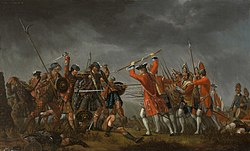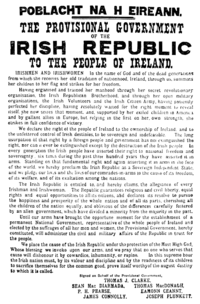The Rising of the North of 1569, also called the Revolt of the Northern Earls or Northern Rebellion, was an unsuccessful attempt by Catholic nobles from Northern England to depose Queen Elizabeth I of England and replace her with Mary, Queen of Scots.
Background

When Elizabeth I succeeded her sister Mary as Queen of England in 1558, her accession was disputed due to the disputed legitimacy of the marriage of the Queen's parents - Henry VIII and Anne Boleyn. Opponents of Elizabeth turned to Mary, Queen of Scots, as the descendant of Henry's sister Margaret Tudor. The claims were initially put forward by Mary's father-in-law, King Henry II of France, but Mary upheld them after her return to Scotland in 1561.
Many English Catholics, then a significant portion of the population, supported Mary's claim as a means of relief from religious persecution. This position was especially strong in Northern England, where several powerful nobles were Catholics; there had been similar risings against Henry VIII; the Pilgrimage of Grace of 1536 and Bigod's Rebellion of 1537. Supporters of Mary hoped for aid from France (among Scots) and possibly Spain (among English). Mary's position was strengthened by the birth of her son, James, in 1566 but weakened again when she was deposed in July 1567.
This was especially difficult and a sign of desperation for the conspirators, when it meant a choice between faith and patriotism, for most of the English involved had ancestral pride in enforcing sovereignty as well as the Province of York over the Scots, whose Auld Alliance with France threatened England south of the Humber. Special care was taken to introduce an English peer as suitor for king consort, so that the Scots would not presume too much about the arrangement; King Henry VIII previously barred Margaret Tudor's descendants for fear of losing leverage and control over Scotland. This, like the proposed marriage between King Edward VI and Mary Stewart, failed, and the worst fears came true when Lord Darnley, although raised at Temple Newsam by the supposed English party of Scottish exiles, came to found the new House of Stuart descended from Lords d'Aubigny, a line of ardent soldiers for Scotland in France, against England. This as much as Mary's joint rule with Francis II of France, and the Secret Treaty of Dover eventually led to Jacobitism, and English Catholics could not feel proud to associate with the "Auld Enemy" under such conditions. The unpalatable conditions for conspiracy, Gunpowder Plot a lone exception (because it would have undone the Protestant Scottish succession), were to be made further maddening by the Spanish Armada. Most Catholics distrusted the Jesuits and grudgingly accepted the Royal Supremacy; they were to provide the backbone of King Charles I's forces in the Bishops' Wars, both to oppose the proliferation of Calvinism in Northumbria by the Knox and Bowes intermarriage, and the Covenanters as well as to reinforce Anglocentric policies in the Scottish Lowlands.
Rebellion under Northumberland and Westmorland

The rebellion was led by Charles Neville, 6th Earl of Westmorland, and Thomas Percy, 7th Earl of Northumberland, who in November 1569 occupied Durham and celebrated Mass in Durham Cathedral. Such public Catholic worship had been prohibited by the Protestant Queen Elizabeth. Westmorland's wife, Jane Howard, played an active part in the rebellion, hoping to arrange a marriage between her brother Thomas Howard, 4th Duke of Norfolk and the prospective Queen Mary.
From Durham, the rebels marched south to Bramham Moor, while Elizabeth struggled to raise forces sufficient to confront them. But, hearing of a large force being raised by the Earl of Sussex, the rebels abandoned plans to besiege York, and captured Barnard Castle instead. They proceeded to Clifford Moor, but found little popular support. Sussex marched out from York on 13 December 1569 with 7,000 men against the rebels' 4,600, and was followed by 12,000 men under Baron Clinton. The rebel earls retreated northward and finally dispersed their forces, fleeing into Scotland.
Leonard Dacre's resistance
.svg/200px-Union_flag_1606_(Kings_Colors).svg.png)
A questionable role in the rebellion was played by Leonard Dacre, an early sympathiser of Mary. At the outbreak of the rebellion, he travelled to Elizabeth's court at Windsor to claim the heritage of his young nephew, the 5th Baron Dacre. After the latter's untimely death in 1569, this had descended to his sisters, all married to sons of the Duke of Norfolk. Dacre returned to Northern England, ostensibly a faithful partisan of Elizabeth, but his intentions remain unclear.
After the retreat of the rebels, he seized Greystoke Castle and fortified his own Naworth Castle, where he gathered 3,000 Cumbrian troops and tried to keep up the appearance of good relations with the Queen. He held out against a siege of the royal army under Baron Hunsdon but then attacked the retreating army at Gelt River. Though Hunsdon was outnumbered, he charged Dacre's foot with his cavalry, killing 300â€"400 and capturing 200â€"300 men. Dacre escaped via Scotland to Flanders, where he died in exile.
Reprisals

Of the rebellion's leaders, the Earls of Northumberland and Westmorland had fled into Scotland. Northumberland was captured by James Douglas, 4th Earl of Morton, and turned over to Elizabeth in 1572, who had him beheaded at York. After having been hidden at Ferniehirst Castle, Westmorland escaped to Flanders, where he died impoverished. His family lost their ancestral homes and his wife, Jane Howard, also fled to the Continent. She lived the rest of her life under house arrest. Her brother, the Duke of Norfolk, was first imprisoned, then pardoned. He was imprisoned again following the Ridolfi plot in 1570 and finally executed in 1572. Norfolk's treason charges included "comforting and relieving of the English rebels that stirred the Rebellion in the North since they have fled out of the realm." Altogether, 600 supporters of Mary were executed, while many others fled into exile. Parliament concluded that Mary was not a threat and the execution was simply a reprisal for her involvement
In 1570, Pope Pius V had tried to aid the rebellion by excommunicating Elizabeth and declaring her deposed in the papal bull Regnans in Excelsis, but the document did not arrive until the rebellion had been suppressed. The bull gave Elizabeth more reason to view Catholics with suspicion. It inspired conspiracies to assassinate her, starting with the Ridolfi plot. In 1587, Elizabeth brought Mary, Queen of Scots, to trial for treason; she was convicted by the court and executed.
See also

- Desmond Rebellions
References

External links
.jpg/220px-Rebounding_beach,_among_other_things_(9404384095).jpg)
- http://www.tudorplace.com.ar/Documents/NorthernRebellion.htm
- http://www.timetravel-britain.com/05/July/raby.shtml